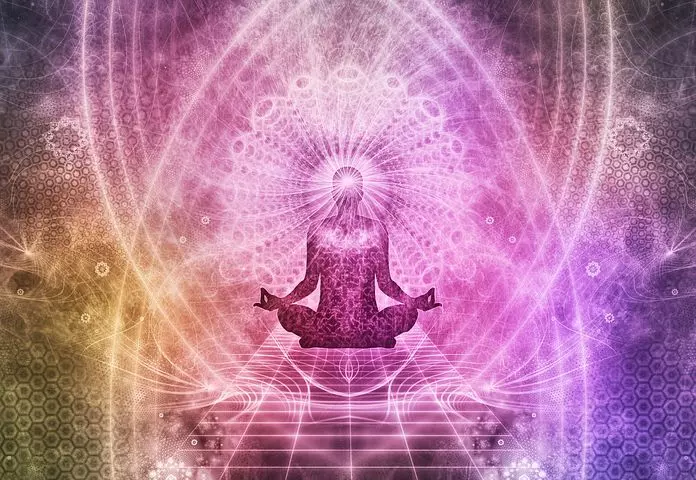Shrooms
The Side Effects of Magic Mushrooms
We are going to discuss the side effects of magic mushrooms. It contains hallucinogenic substances called psilocybin and psilocin, which may cause many different reactions in people. Magic Mushrooms in Canada are becoming quite popular. More recently, research has shown a link between long-term use and possible psychosis. First, however, it is essential to state that not every person reacts the same way when they consume them–some may experience no reaction or minor symptoms, while others have more severe reactions.
Have you ever heard of magic mushrooms and their side effects? Well, if not, then this blog post is for you! You will learn what they are and what to do if someone consumes them. This blog post also includes tips on avoiding taking magic mushrooms altogether.
It’s no secret that psychedelic drugs like mushrooms are on the rise. Recent studies show an increase in people who are using these substances. However, this isn’t always a great thing. Magic mushrooms can have some side effects, and knowing about them is essential before you start taking them for recreational purposes.
People have been eating mushrooms since the beginning, but did you know this drug has side effects? Some common side effects include vomiting, nausea and hallucinations. So, if you’re considering trying one of these mushrooms, ensure your body is ready!
The Effects of Magic Mushrooms
The effects of shrooms can vary from person to person, and if you are considering taking them, you should know what the side effects might be. Magic mushrooms have a lot in common with LSD or acid, but they are not as intense. They produce euphoria and hallucinations that last for about 6 hours. Some studies show it can help people deal with anxiety or depression. However, it may also trigger an emotional response such as fear, panic, paranoia or feelings of worthlessness. Some people experience nausea and vomiting when coming down from a high on magic mushrooms because they have been fasting since their last meal before taking the drug, which increases its potency in their bodies.
Magic mushrooms are not the kind of thing you should experiment with for fun. It is potentially dangerous as it is possible to overdose. The most common side effects include nausea, vomiting, anxiety, mood swings, drowsiness/fatigue (low energy), headache/migraine (painful head pain), stomach pain/cramping/diarrhea (severe cramps). Do not consume while pregnant or breastfeeding; do not mix with alcohol because it may cause vomiting or nausea. Bringing up questions before taking them is always best to ensure they’re safe for your body and mind.
Magic Mushrooms – a natural fungus that can alter how humans feel, think and see the world. If you’ve taken them before, you’ll understand why they’ve been used throughout history for their psychedelic properties, but if you haven’t experienced a shroom trip, the thought can be a little daunting.
It’s essential to be aware that every Magic Mushroom trip is different. The effects of the shrooms are other for each person, and you can never fully control how the experience will go. So, what does it feel like to be high on shrooms, and are there any long-term effects?
What Does it Feel Like To Take Shrooms?
Shrooms affect everyone differently, so it’s not straightforward to try and describe the exact feelings. Many factors, such as the type of mushrooms consumed, the user’s environment, and their mental state, can play a significant role in responding to shrooms.
A trip can usually last between 4-6 hours, with some effects lingering longer and can even be felt the next day. It can take 20 to 40 minutes to feel the effects, which often correlates with how the shrooms have been ingested. For example, taking dried shrooms directly or as a powder in tea will bring on the effects much quicker than taking a shrooms capsule.
Once the effects kick in, that’s when the magic starts! It’s often a journey that the user will experience with a range of emotions taking place. Sometimes, you might feel completely normal and sober, and at other times, you might feel changes in your perception.
Time might slow down, bouts of euphoria can occur, and colours may appear more vivid. Shrooms’ effects occur when psilocybin is broken down by the digestive system and turned into psilocin. The impact of this chemical can result in a lessened ego, more spiritual awareness and a deeper connection to the earth.
The Short-Term Side Effects of Taking Shrooms
As mentioned above, the side effects can vary massively. Plenty of enjoyable feelings can come with taking shrooms, but some are not as pleasant. Therefore, it’s always a good idea to research the shrooms you are about to consume beforehand, as some research can leave you feeling prepared and more in control of the journey you’re about to embark on.
Here are some of the most common positive short-term effects[1]:
A spiritual connection to the world
One of the most common reasons for taking shrooms is expanding the mind and increasing the connection to the world around us. People commonly used magic mushrooms in tribal rituals, in which people wanted to connect with their spiritual side. Today, many still turn to shrooms for these effects.
Hallucinations
Changes in depth perception, sound and colours can occur when taking shrooms. In addition, hallucinations can be extreme or mild, depending on how much psilocybin you consume.
Euphoria
Psilocybin is chemically similar to serotonin, which causes feelings of positivity and happiness. As a result, users will often experience bouts of euphoria rather than long periods of the feeling.
These are some of the less pleasant effects:
Anxiety
Hallucinations paired with the feeling of being ‘out of control’ can cause anxiety in some users. This can also happen if the user suffers from anxiety or other mental health issues.
Psychosis and paranoia
Psychosis can make the user feel like they’ve lost touch with reality, making them anxious or paranoid. This can be stressful, and it’s advised to take shrooms with someone you know and trust, as they can calm you down.
Fluctuating emotions
Feelings can change pretty quickly during a trip. The user can often experience happiness or sadness without understanding why, so it’s best to go with the flow.
Nausea
Nausea can occur if the user has eaten directly before ingesting shrooms. Therefore, it’s best to take them on an empty stomach but ensure access to water and snacks during the trip.
What are the known long-term side effects of shrooms?
Up until recently, the effects of psilocybin have gone widely undocumented. However, more and more research is taking place to see how this chemical in magic mushrooms can be life-changing in the long run.
An important aspect is that psilocybin doesn’t cause addiction or dependency. This is great for those worried that long-term consumption could cause them to feel withdrawal symptoms if they ever decide to stop taking the magic fungi.
In addition, some studies have shown that psilocybin may effectively reduce depression and anxiety. A survey into cancer patients who suffered from anxiety and depression was trialled, with each taking just one dose of psilocybin. The results found that 80% of participants showed reductions in both psychological disorders, meaning that in the long term, psilocybin could be used alongside therapy to treat some mental health issues.[2]
In some extreme cases, a condition called Hallucinogen-persisting Perception Disorder (HPPD) can form, but this is generally after prolonged use of shrooms or if the user already has other mental health issues[3]. Sufferers of HPPD have flashbacks to their hallucinations or experiences under the influence of a psychedelic, which isn’t painful but can be stressful.
There is still a lot of research to be conducted in this area, but as psilocybin trials occur, the effects look promising.
Final Thoughts
You should always approach a new substance cautiously the first time. As mentioned above, a magic mushroom trip will be a journey that holds a range of emotions and surprises. The best way to experience it is to go with the flow, take small doses, especially initially, and be in a safe, comfortable environment.
References:
[1]https://www.drugpolicy.org/drug-facts/short-term-effects-psilocybin-mushrooms [3]https://www.medicalnewstoday.com/articles/320181What are Magic Mushrooms
Shrooms have been gaining popularity over the years and are now being promoted for spiritual and mental health. But what are magic mushrooms, and how do they affect you?
Magic mushrooms (shrooms) are wild fungi famously known for their psychedelic effects. The main compound found in these fungi which causes these effects is believed to be psilocybin.
The indigenous people of America and Europe have used magic mushrooms for thousands of years for healing and spiritual use. As a result, magic mushrooms have been called many things. The names include shrooms, mushies, blue meanies, golden tops, liberty caps, philosopher’s stones, liberties, Amani, and agaric.
Psilocybin shrooms come in many species, but the common are Psilocybe cubensis, Psilocybe Azurescens or Psilocybe Semilanceata.
How Do You Take Magic Mushrooms
So, how do you take magic mushrooms? There are many ways to take magic mushrooms, but they are generally consumed after drying. People also blend them into food and drinks as well. It is also possible to eat them freshly picked, but consuming them after they are dried for better results is generally recommended.
Psilocybin is classified as a hallucinogen with many psychedelic effects. When magic mushrooms are consumed, the psilocybin is converted to psilocin in the body. Psilocin is believed to affect serotonin levels in the human brain, which alters our senses and perceptions. They can make you hear, see, and feel sensations that appear natural but are not. Many people believe that taking magic mushrooms aids in spiritual awakening and self-discovery.
Listed below are magic mushrooms’ most common side effects. A person’s effects after consuming magic mushrooms vary from person to person and are highly related to their state of mind and environment. The most common effects reported include a sense of euphoria, a distorted sense of time, and a feeling more relaxed, tired, or even nauseous. Thoughts would sometimes become more abstract but clearer at the same time. Colours will be more vibrant and brighter, and some will have their hearing become more acute. There are also cases where people become nervous and paranoid, leading to panic. Psychosis has also been reported in cases as well.
Generally, people will have their thoughts and emotions become more exaggerated, so it is commonly recommended only to take magic mushrooms when in a good state of mind. For example, people going through depression (heavy or mild) or mental problems should not take magic mushrooms as it will usually make the condition worse.
How to Identify Magic Mushrooms in the Wild
Many strains of mushrooms in the wild contain psilocybin, but they generally look like dried ordinary mushrooms with long, thin stems. The stems are usually greyish white, with the mushroom’s head being dark brown with the centre being white or light brown. There are many different strains of mushrooms found in the wild. If you are on the hunt, it is highly recommended to do further research to identify your findings better, as many mushrooms are poisonous.

What Do Magic Mushrooms Do?
Magic mushrooms are hallucinogenic capsules, meaning they can cause a person to see, hear, and feel sensations that seem real but are not. However, the consequences of magic mushrooms are exceedingly variable and believed to be influenced by environmental factors.
Shrooms have a long record of being associated with spiritual reports and self-discovery. Many believe that naturally occurring capsules like magic mushrooms, weed, and mescaline are sacred herbs that enable people to attain superior non-secular states. Others take magic mushrooms to enjoy a feeling of euphoria, connection, and a distorted feel of the time.
The psilocybin found in shrooms is transformed to psilocin within the frame and is believed to steer serotonin levels inside the brain, central to altered and uncommon perceptions. The consequences take 20 to forty minutes to start and can last up to 6 hours—the equal amount of time it takes for psilocin to be metabolized and excreted.
Several things impact the outcomes of Magic mushrooms, such as dosage, age, weight, one’s persona, emotional state, environment, and records of mental illness.
Side Effects of Magic Mushrooms
All hallucinogens deliver the hazard of triggering mental and emotional problems and inflicting accidents while beneath the effect. In addition, among adolescents, magic mushrooms are often consumed with alcohol and different pills, growing psychological and physical risks.
The quantity of psilocybin and psilocin contained in any magic mushroom is unknown, and mushrooms range greatly in the amounts of psychoactive contents. This means it is tough to inform the length, intensity, and kind of “journey” a person will enjoy.
Side outcomes of magic mushrooms can encompass both physical and intellectual consequences.
Common Side Effects of Magic Mushrooms:
- Nausea
- Yawning
- Increased coronary heart rate, blood pressure, and temperature
- Muscle weakness
- Drowsiness
- Lack of coordination
- Dilated pupils
- Headaches
- Euphoria
- Having introspective (religious) reports
- Hallucinations (visual or auditory)
- Nervousness
- Psychosis
- Paranoia
- Panic reactions
- Distorted sense of environment
One person’s experience varies; thus, more research is needed to determine long-term side effects. However, it has been said that customers can enjoy long-term adjustments in persona, in addition to flashbacks lengthy after taking mushrooms.
Since magic mushrooms look much like poisonous mushrooms, poisoning is another danger of taking these tablets. Mushroom poisoning can cause extreme illness, organ damage, and even death.
It is also common for Magic mushroom merchandise to be contaminated. A take look at 886 samples speculated to be psilocybin mushrooms analyzed by way of Pharm Chem Street Drug Laboratory showed that most straightforward 252 (28%) were hallucinogenic, even as 275 (31%) were ordinary store-offered mushrooms laced with LSD or phencyclidine (PCP), and 328 (37%) contained no drug at all.
Help for Mushroom Poisoning
If you believe you studied that you or someone you care about ate a toxic mushroom, name poison control right away at 800-222-122. Do not wait for signs to occur. They are to be had 24 hours a day, seven days a week, twelve months a year.
Signs of Use
If the one that you love is the usage of shrooms, they may be nauseous or seem worried or paranoid. It is vital to note any changes in slumbering and ingesting patterns and shifts in mood, persona, and social activities.
Myths & Common Questions
There are many myths about magic mushrooms. Some humans believe, for example, that magic mushrooms are “safer” and bring a “milder” trip than different hallucinogenics.
Like their ability to poison all and sundry who take them, magic mushrooms are just as unpredictable in their outcomes as different drugs. Some people have said much more excessive and frightening hallucinations on Magic mushrooms than on LSD.
Many humans confuse fly agaric mushrooms with psilocybin-containing mushrooms—however, they are not identical. Instead, fly agaric mushrooms incorporate the psychoactive chemicals ibotenic acid and muscimol, which can be recognized to motive twitching, drooling, sweating, dizziness, vomiting, and delirium.
Tolerance, Dependence, and Withdrawal
Like most tablets, the higher you use magic mushrooms, the higher the tolerance you develop. However, tolerance also develops speedily with regular use. This means you need the extra drugs to attain the identical effect. Developing a tolerance may be especially volatile with shrooms because consuming a considerable amount can bring about overdose symptoms. These symptoms vary from person to person, but the most common symptoms reported include feelings of diarrhea, vomiting, and muscle weakness. Some people will also start to feel anxious and begin to panic. Psychosis and seizures have also been reported in some cases as well.
How Long Do the Effects of Magic Mushroom Last?
Magic mushrooms generally wear off after 6 to 12 hours. But, like other drugs, you can find magic mushrooms in a person’s hair for up to 90 days.
Addiction
Psilocybin is not invariably addictive and does not result in compulsive use. In addition, the human body builds a tolerance to psilocybin reasonably quickly, and the effects become milder after continued use.
Withdrawal
While users rarely document physical signs and symptoms of withdrawal while they forestall the usage of the drug, a few experience psychological effects, which may consist of depression.
How to Get Help
If you watched your youngster experimenting or frequently using magic mushrooms, recall having a firm yet loving verbal exchange with them about the risks of psychedelics, particularly while blended with alcohol or different pills. At this time, it is also critical to emphasize that you are there to assist and aid them.

